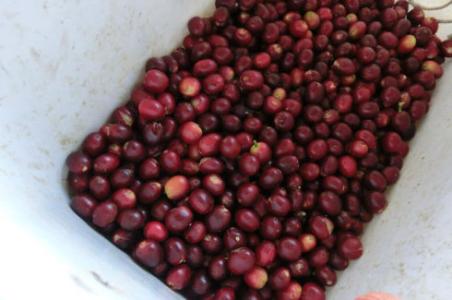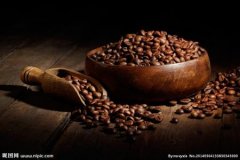The first prize of the Panamanian national treasure bean cup test contest-Rosa

Maybe you don't know the story about rose summer, the fragrance of flowers, tropical fruit, strong sweetness; these are the feelings that rose summer has always brought to us. Properly baked, they make you feel like sipping the fragrance of a bouquet of flowers. It was originally taken as a coffee sample to a coffee experimental garden in Costa Rica, and was distributed to several small-scale farms for small-scale trials. In 1931, it was obscure from Geisha Mountain Mountain in southwestern Ethiopia (which happens to be synonymous with the Japanese geisha) to Kenya, wandered around Tanzania and Costa Rica, transplanted to Panama in the 1960s, and then survived for nearly half a century. Just a blockbuster, beat the victorious Bourbon, Kaddura, Kaduai, Tibica and other varieties to win the first prize of the Panamanian National Bean Cup Test Competition in 2005, 2006 and 2007. In 2007, the International famous Bean Cup Test sponsored by the American Fine Coffee Association (SCAA) won the championship again, and the bidding price was US $130 per pound, setting an all-time high price record for competition beans. It is reported that the later Panamanian national treasure bean competition will be divided into two groups: Rose Summer and non-Rose Summer, so as not to be robbed of the brilliance of other varieties by Rose Summer.
Geisha, a member of the Tibika family, became famous more than 70 years after leaving Ethiopia, and fulfilled the saying that Ethiopia is a treasure trove of Arabica genes. giving out a variety abroad is enough to make waves in the coffee market. the species of Rose Summer was discovered in the Rose Summer Forest of Ethiopia in 1931 and then sent to the Coffee Research Institute in Kenya. It was introduced to Uganda and Tanzania in 1936, Costa Rica in 1953, and Panama was introduced by Francesca from Dongba Seven Agricultural Garden in the 1970s. Mr. Serraxin got the seeds from CATIE in Costa Rica and began to grow Rosa Coffee, which is not easy to come by because of its extremely low yield and bidding.
She is so extraordinary that the fruity and floral elements are like Yega Xuefei from Africa and Ethiopia on the other side of the world. Of course, these are all old news now. Some small farms have also got rose summer seeds, and are eager to grow their own rose summer. in order to highlight the characteristics and aroma of this bean, the baking degree is on the verge of two explosions, and two explosions and one burst are more commonly used baking degrees. this comparison can give play to the characteristics of beans, too shallow will produce miscellaneous smell, too deep will lose the aroma of flowers and fruit acid. Of course, this should also be adjusted according to the characteristics of the coffee beans and the roaster's understanding of the beans themselves.
Important Notice :
前街咖啡 FrontStreet Coffee has moved to new addredd:
FrontStreet Coffee Address: 315,Donghua East Road,GuangZhou
Tel:020 38364473
- Prev

A brief introduction to the Flavor and Taste of Fine Coffee in the chaotic Climate of Manor Ireta in Panama
Panama is by far the narrowest country that shares the Atlantic and Pacific coastlines. And this has a far-reaching impact on coffee production. Central America is a long isthmus from northern Mexico to southern Colombia, connecting North and South America. Panama is located in the southernmost part of Central America, so the country runs from east to west, not from north to south as people think. this
- Next

A brief introduction to the coffee bean flavor and taste of Santa Rita Manor, Colombia.
Colombia is fortunate to have Atlantic and Pacific ports, which helps to reduce the cost of transporting coffee. In South America, she is the only country with this condition. The National Coffee Management Association of Colombia, like the National Management Association of Kenya, is a model of coffee organization. Compared with other producing countries, Colombia is more concerned with developing products and promoting production. That's exactly what it is.
Related
- Does Rose Summer choose Blue, Green or Red? Detailed explanation of Rose Summer Coffee plots and Classification in Panamanian Jade Manor
- What is the difference between the origin, producing area, processing plant, cooperative and manor of coffee beans?
- How fine does the espresso powder fit? how to grind the espresso?
- Sca coffee roasting degree color card coffee roasting degree 8 roasting color values what do you mean?
- The practice of lattes: how to make lattes at home
- Introduction to Indonesian Fine Coffee beans-- Java Coffee producing area of Indonesian Arabica Coffee
- How much will the flavor of light and medium roasted rose summer be expressed? What baking level is rose summer suitable for?
- Introduction to the characteristics of washing, sun-drying or wet-planing coffee commonly used in Mantenin, Indonesia
- Price characteristics of Arabica Coffee Bean Starbucks introduction to Manning Coffee Bean Taste producing area Variety Manor
- What is the authentic Yega flavor? What are the flavor characteristics of the really excellent Yejasuffi coffee beans?

